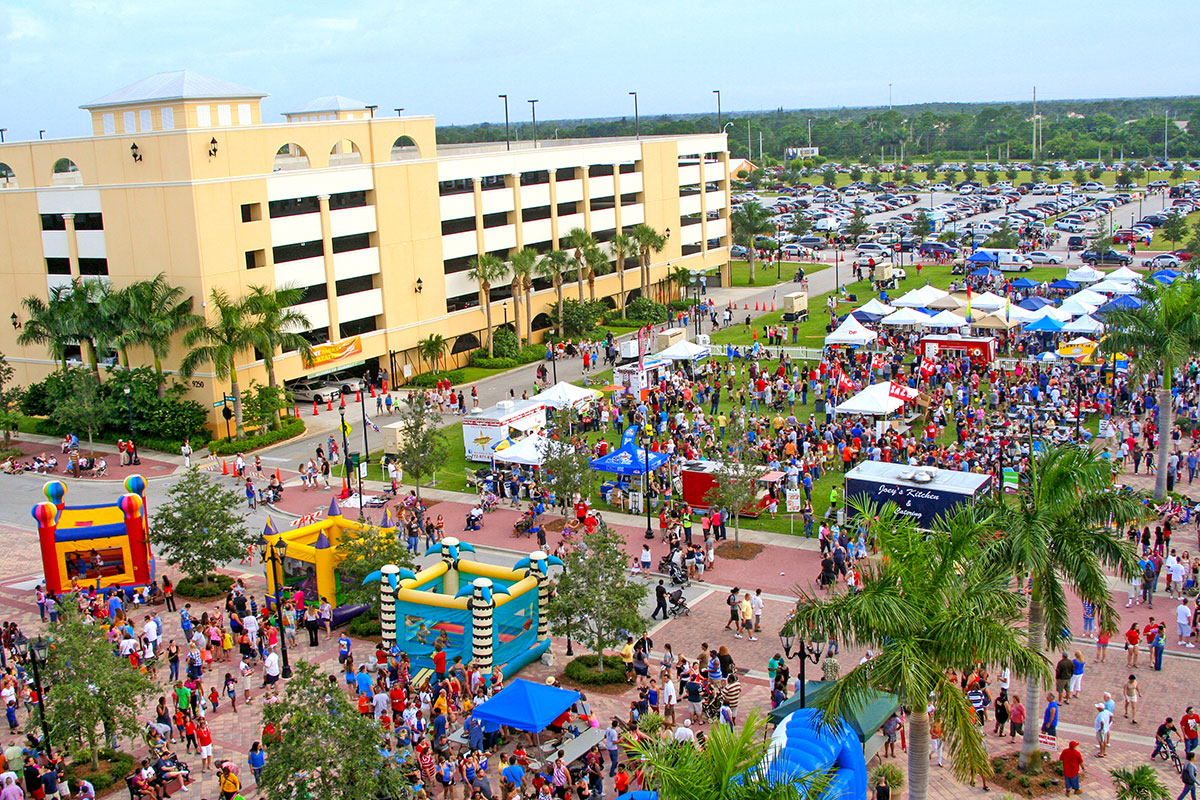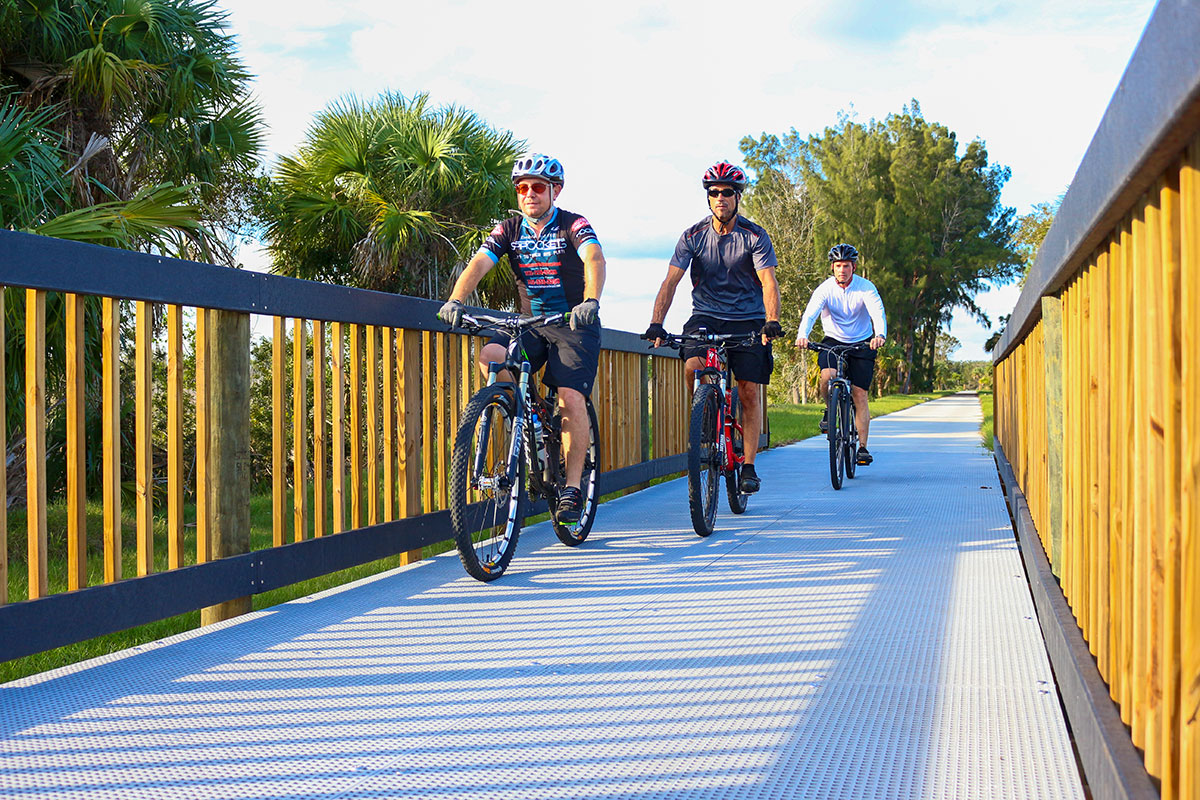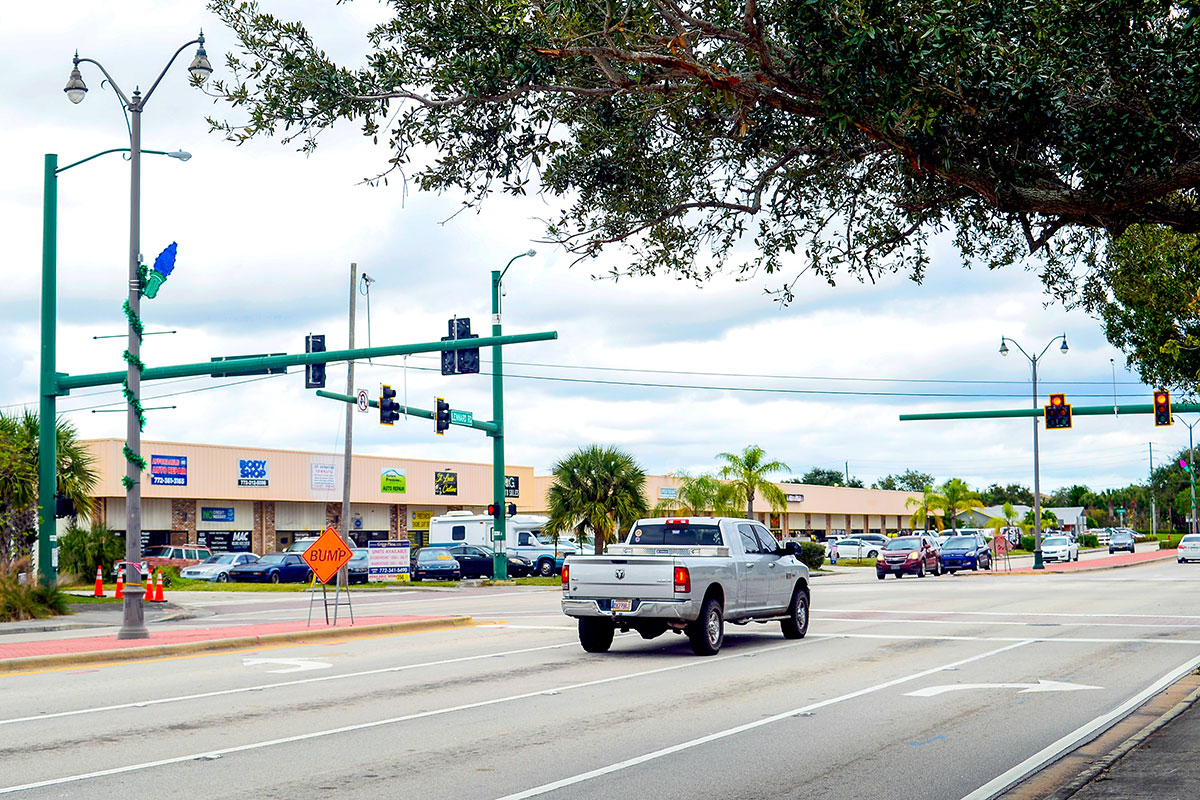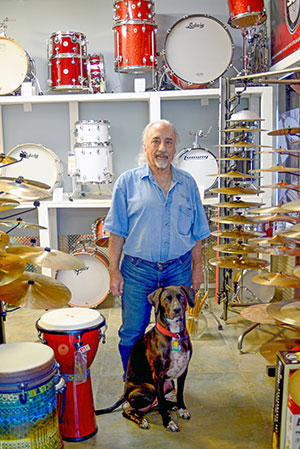Centering a city

After a series of failed attempts, the final chapter is underway for downtown development
BY ELLEN GILLETTE
In a year of canceled air travel and cruises, staycations within Florida have helped satisfy the hunger for a change of scenery. When visiting a new city, the natural place to start is its downtown, with retail, restaurants, government, offices, theaters, galleries and parks. Downtowns are often home to farmer’s markets, car shows, art and craft shows, home shows, parades, even 5K runs. If you live in or visit a city, downtown is the place to be.
Unless you’re in Port St. Lucie.
The 1960s focus for brand new Port St. Lucie was residential, a “bedroom community.” Homes multiplied overnight, selling quickly to retirees or to workers who commuted to jobs north or south. As demographics changed, however, residents needed more convenient access to medical care, grocery stores and gas stations.
By the 1990s, St. Lucie West was being planned. The original vision of sprawling residential sections proved inadequate for the astonishing number of people who flocked there. Business sectors, entertainment, restaurants and schools were added, creating 7,000 jobs. By 2019, Port St. Lucie was the sixth fastest growing city in the country.
But a thriving downtown? No. The area around the MIDFLORIDA Credit Union Event Center [formerly the Port St. Lucie Civic Center] has tremendous potential for expansion and development, but for almost two decades the city has suffered a series of failed attempts, unfulfilled obligations and grand ideas never brought to fruition. That is about to change.

SEEKING INPUT
Although there is no set timeline in place, the re-imagining of the site is a high priority, Teresa Lamar-Sarno, assistant to the city manager, says. Still in the early stages, community input is being actively sought.
Google Main Street near me and directions take you to the MIDFLORIDA Credit Union Event Center where, although indoor and outdoor events are hosted, surrounding streets are not lined with interesting shops to explore or quaint restaurants to enjoy. There are neither independent motels for budget stays nor expensive chain hotels for a more elegant approach to rest and relaxation.
Those things and more may be included in the city’s plan to create a true downtown. The consulting firm of Kimley-Horn and Associates is gathering input and information in order to update the vision, assess current conditions and provide direction to address the unique requirements of the city by developing a long-range policy guide.
Revitalizing the Village Green corridor is one component. The city also has a Small Area Plan for the City Center, bringing new businesses into the 46-acre parcel around it. One positive impact of the plan is the connection of St. Lucie West and Tradition with what Lamar-Sarno calls “the cornerstone of the east side of the city.” The project is estimated to have a $4 million price tag.
In November, the city council voted unanimously to buy back 22 parcels of City Center land whose promised development never materialized.
“This is the beginning of the last chapter,” City Manager Russ Blackburn told the media. “I think now we have it in our control and we can fulfill our destiny.”

COMPLETE STREETS
A downtown area will enhance a critical link in Port St. Lucie’s transportation network, providing for improved emergency response times by using a policy and design approach called Complete Streets. Incorporating Complete Streets has been shown to calm traffic, enhance pedestrian and biking opportunities, improve safety and promote economic development. In Port St. Lucie, this approach will connect trails, the East Coast Greenway and the Crosstown Parkway Extension.
In cities studied by the International Downtown Association, people walked more within downtown areas than when monitored citywide. They biked more. They used public transit more. Complete Streets enables safe access for users of all ages and abilities, including pedestrians, bicyclists, motorists and transit riders.
In addition to lowering the carbon footprint of a city, such assets equip downtowns to adapt more easily to potential economic, social and environmental problems. Fewer jobs are lost because of gas price increases, for example, when workers already walk or bike to work.
The city conducted Walking Audits and Canvassing Days, posted an online survey and will continue to host virtual meetings in order to provide residents and business owners with multiple opportunities to share concerns and suggestions.
MIXED RECEPTION

Not everyone is excited. “We’ve gotten along fine without it,” Kris Hollis, who runs Clocks by Hollis with his father, Phil, on Village Green Drive, says. “Port St. Lucie isn’t set up for it.”
Phil Hollis, however, appreciates the plan for expansion. “I always thought the civic center was to be a focal point for the city,” he says, adding that he would support the revitalization.
Across the divided highway, Stix Nickson owns the only drum store between Miami and Orlando. “The civic center was supposed to be a hub,” Nickson says. “There’s no downside. Gentrifying an area is always a plus, bringing up property values and keeping sales taxes local.” He does see a need for increased infrastructure, moving forward.
A comprehensive report by the International Downtown Association showed that even though the average downtown sits on 3% of the area’s land, its offices and businesses provide 31% of the citywide tax revenue. Downtowns, on average, generate nine times the retail sales than retail establishments located elsewhere.
Tradition’s Town Center lends a unique atmosphere to that planned community. As stated on its website, the 1950s-based design “creates a natural community hub for residents to meet and socialize, where events like a weekly farmers market invite one and all to gather.”
However, Tradition accounts for only about 5% of the population. It makes sense for another, larger area to be designated for the majority of its residents, communicating inclusivity, diversity and openness.
RESIDENTS RESPOND
Downtowns represent, on average, 44% of the hotels and 16% of the city’s retail sales and businesses. One thing the city hopes to determine is the kind of businesses the community wants. The top two survey choices for virtual meeting participants on Nov. 17 were dining and entertainment.
Respondents also felt that the center doesn’t host enough events and would like to see more that are specifically geared to families, young adults or retirees.

Statistically, downtowns brand their cities by offering not only business and retail opportunities but also activities such as museums, galleries, theaters and places of worship. Time capsules and statuary of historical figures help create a sense of belonging and continuity. Entryway signs on U.S. 1 announcing the new downtown were endorsed by an overwhelming majority of participants.
The population within city limits is close to 200,000, but fewer than 100 registered for the Nov. 17 virtual meeting. Community input regarding design, intensity, facilities and transportation is vital. An online survey was in place through the end of November, but comments and questions may be directed to the appropriate offices after that.
Speaking up is the best way for planners to assess community needs and wants. An anonymous virtual meeting attendee residing at Evergreen Condominiums, for example, was concerned about the impact of development on that neighborhood. George Williams wanted assurance that projects will be created to embrace diversity. And Paul Wright suggested a downtown plan that would evoke the kind of identity that West Palm’s City Place enjoys. Their input, now on record, is exactly what consultants at Kimley-Horn want to know.
Petula Clark’s 1964 hit Downtown urged people to “go downtown/Things will be great when you’re downtown.” For that to happen in Port St. Lucie, voices needs to be heard. For more information visit https://www.cityofpsl.com/government/departments/community-redevelopment/city-center.
